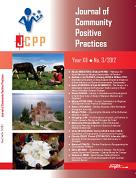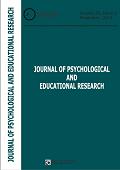
GROUNDS FOR THE DEVELOPMENT OF SOCIAL ECONOMY IN ROMANIA
GROUNDS FOR THE DEVELOPMENT OF SOCIAL ECONOMY IN ROMANIA
Keywords: social economics; social entrepreneurship; development; social enterprise.
This paper sets out as an explanatory approach, supported with theories and statistical data, for the development of the social economy sector in Romania. Following a brief review of the literature, which informs the theoretical basis of this paper, We presented a series of economic and social data, expressing the needs of several social groups, potential actors in the social enterprise arena. The study has dealt with the issue of social economy by analysing two daily papers and a professional journal, as well as by interviewing 14 experts who work in the social field, in state institutions and NGOs. After analysing the articles published in the two papers and the journal, it can be stated that there is, in the context presented, a certain interest in the issue of social economy. The articles on this subject referred to different approaches in the field of social economy, the main idea being, particularly in the journal, that social economy represents a potential for creating jobs and for the social integration of the disadvantaged. As far as the results obtained after analysing the interviews are concerned, social economy is seen by experts as an opportunity to integrate disadvantaged groups into the labour market, to reduce social marginalization and to improve local communities’ quality of life. The conclusions of the paper point to the need, but also to the possibility of developing social economy in Romania, the need to stimulate and sustain it, especially in regards to social entrepreneurship.
More...
